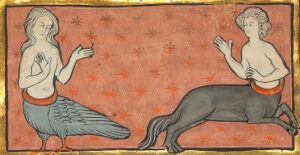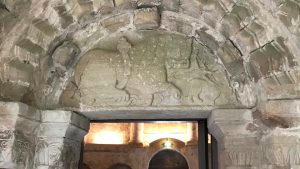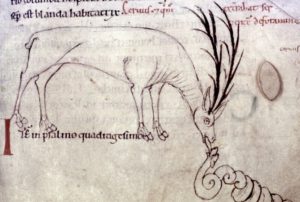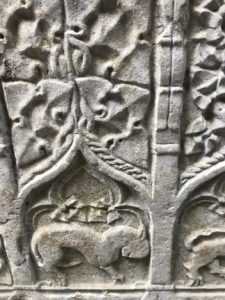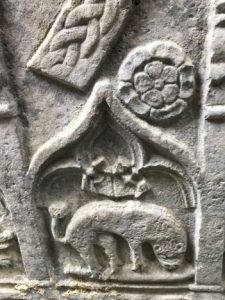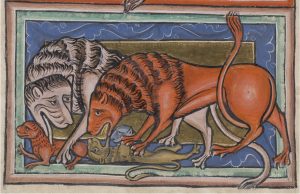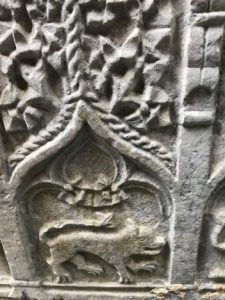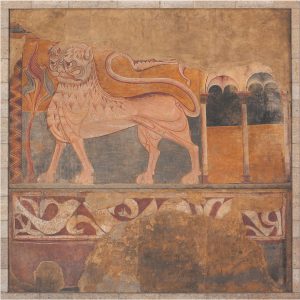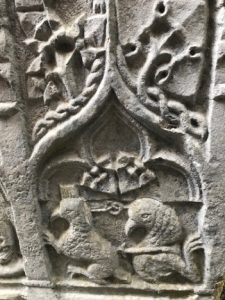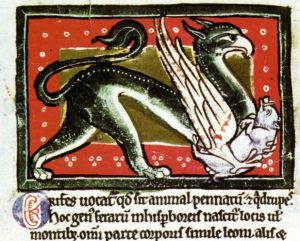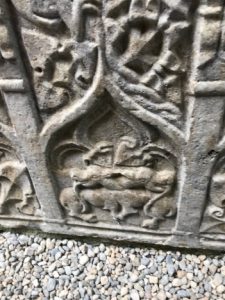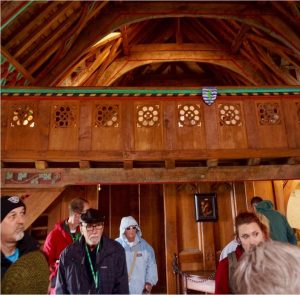10 Chapter Ten: Medieval Christianity (Patrick, Brigid, Columbanus)
The Medieval Bestiary: A “book of beasts,” including descriptions of the characteristics and habits of animals together with associated allegorical moral lessons.
“The lion is the first animal to appear in the bestiary, as described in the text: ‘Now leo in Greek is translated to king (rex) in Latin, because he is the ruler of all beasts.’ That concept is now so well-known that it even forms the basis for a Disney movie, hundreds of years later. However, although the bestiary was the closest thing to an early medieval natural history encyclopedia, unlike modern resources such as Wikipedia that explain the habitats, scientific classifications, or eating preferences of animals, creatures in the bestiary were explained in terms of their place within the Christian worldview. The text devoted to the lion goes on to explain that lion cubs are born dead. On the third day, the father lion breathes on them, bringing them to life. This was seen as a reflection of the Crucifixion and Resurrection three days later. The animals of the world were interpreted in the bestiary as evidence of God’s divine plan for the world, as he placed behaviors and characteristics into the animals at the beginning of time to mirror Biblical truths. . . .
A unicorn is a savage beast that can only be caught via a clever stratagem. If a virgin sits alone in the forest, the unicorn will come willingly to her lap and lay down its head. A hunter can then safely approach and kill the beast. The story was seen as a Christian allegory for the Incarnation of Jesus in the womb of the Virgin Mary, and his subsequent vulnerability as a human at the hands of men. The unicorn was thus seen as a natural-world counterpart for Christ. In this illustration, the maiden grasps the unicorn by its horn, which was valued for its miraculous ability to purify water. The woman puts up her finger in a gesture of warning to the approaching hunter and sits on a throne, likely in reference to her link to the Virgin.
Although a number of the animals featured in the bestiary have a Christian allegory attached to them, many of the others have no meaning attached to them at all. One such in the group of land animals is a beast called the bonnacon, now known to be mythical.” (Source: The British Library, “Beastly Tales from the Medieval Bestiary”: https://www.bl.uk/medieval-english-french-manuscripts/articles/beastly-tales-from-the-medieval-bestiary)
- Harpy and Centaur
- Cashel centaur shooting a lion
- Stag
- Stag at Cashel
- Lion at Cashel
- Lions
- Tiger at Cashel
- Tiger
- Griffin at Cashel
- Griffin
- Cashel idk
- Cashel Hippocampus
Irish Saints
Saint Patrick (Patricius)
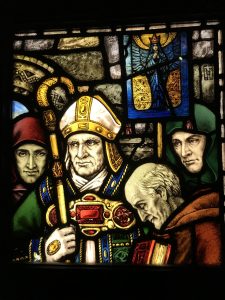
I arise today
Through a mighty strength, the invocation of the Trinity,
Through belief in the threeness,
Through confession of the oneness
Of the Creator of Creation. –St. Patrick
St. Brigid (Feast Day: February 1st (Imbolc))
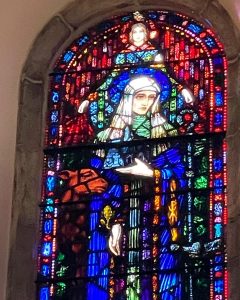
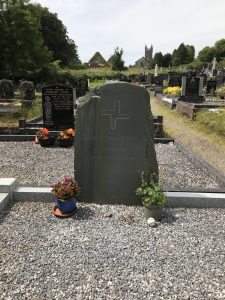
St. Gobnait, Patron Saint of Beekeepers
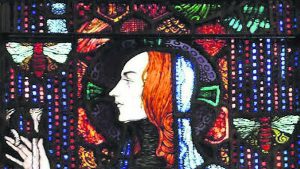
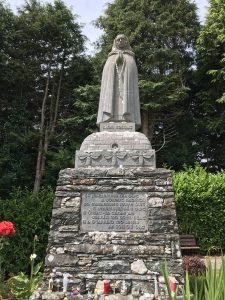
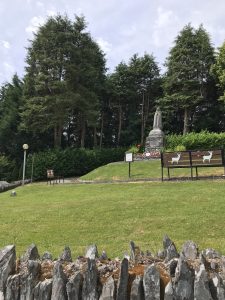
Gobnait was born in Co. Clare in the 6th century and due to a family feud, fled to the island of Inisheer where she founded a church which still stands on the north side of the island near the shore. One day an angel appeared to her and told her to head inland and to find the place of her resurrection. She was told she would know this spot as it would be marked by the presence of 9 white deer.
Saints at Cashel
Read about medieval saints in The Coetivy Hours 15th century. Note Saint Bartholomew, p. 66 (image) and p. 67; St. Catherine, p. 73 (image) and p. 74.
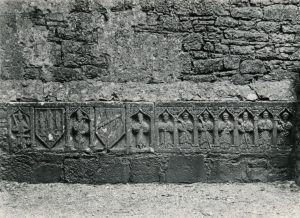 Rock of Cashel
Rock of Cashel
Saintly attributes: St. Michael the Archangel: Scales, Devils, Fishes; St. John the Baptist: Books, Camel skins; St. Thomas of Canterbury: Butler, Foliate ornament; St. Catherine of Alexandria: Wheels, Crowns; St. James Minor: Clubs; St. John: Chalices, Dragons: St. James Major, Staffs, Pilgrim’s hat, Scallop shells; St. Andrew, St. Peter: Keys.
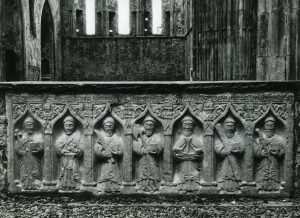
Rock of Cashel
Saintly attributes: Saint Brigid: book; Saint Philip: loaves; Saint Bartholomew: knife; Saint Matthias: axe; Saint Simon: ship; Saint Thaddeus: club; Saint Matthew: a book and a sword
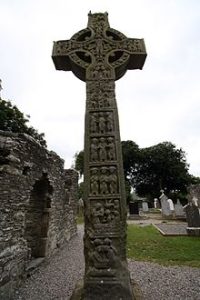
Celtic Cross

Burials at Rock of Cashel-1 : Look at burials on page 172.

